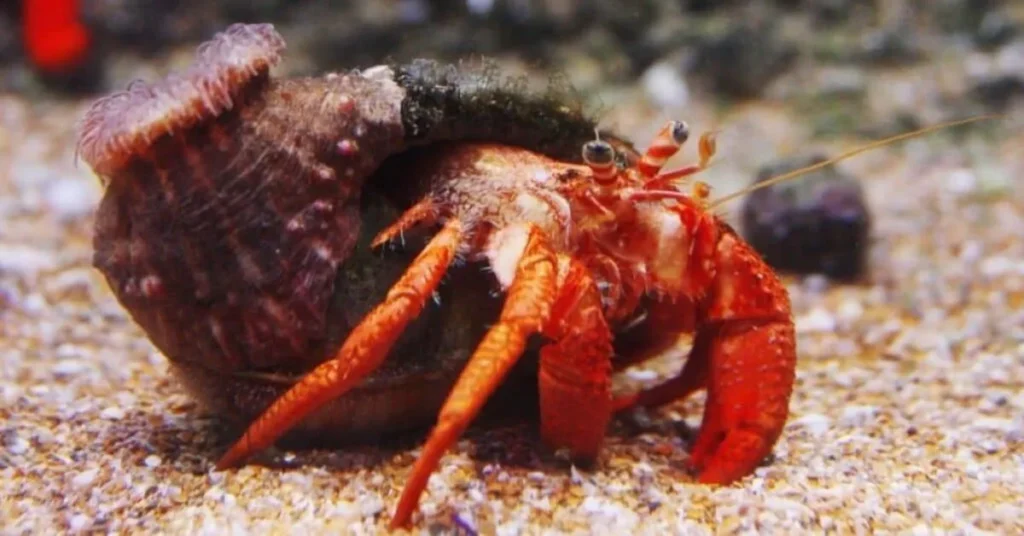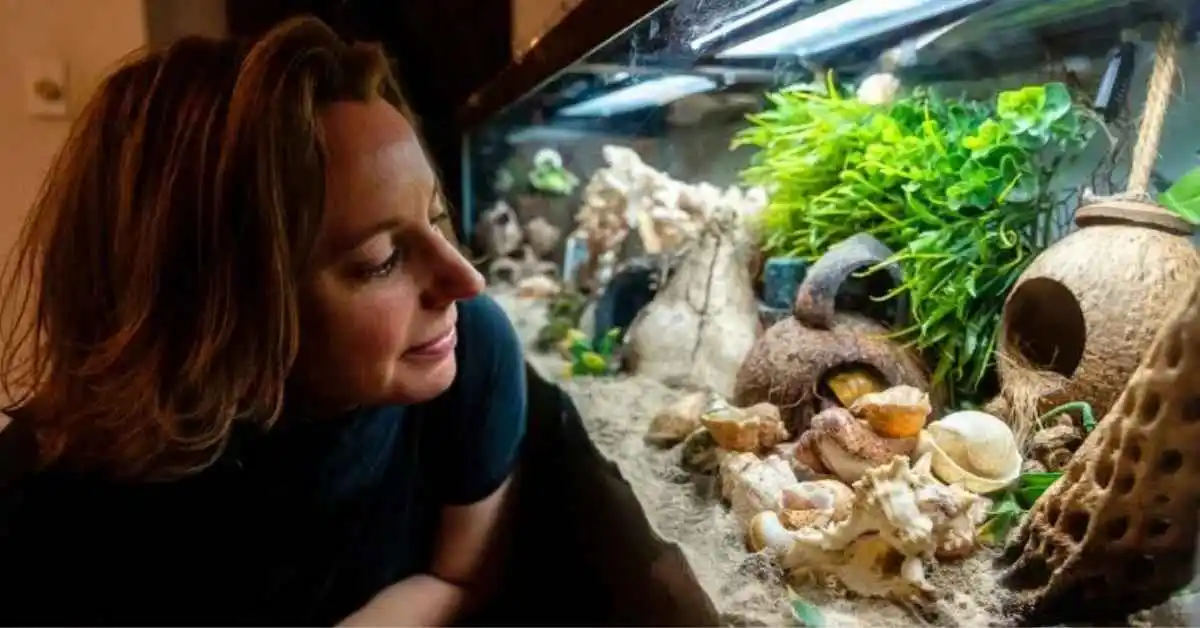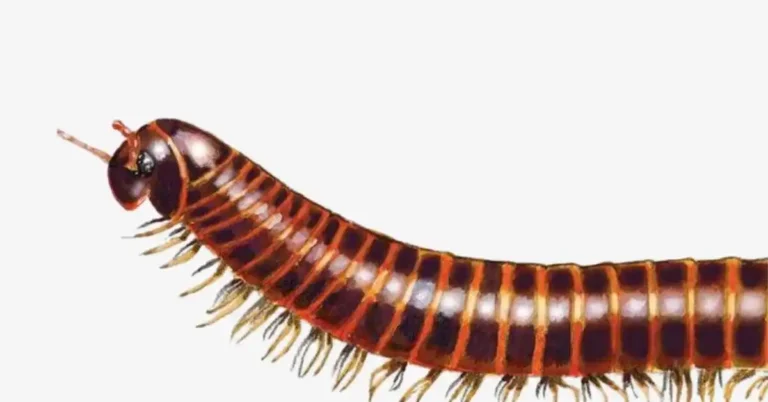The Best Habitat for Hermit Crabs to Thrive 1
Hermit crabs make more interesting and unusual pets. These land crabs hide their exoskeletons within the shells of other creatures, generally sea snails. New hermit crab owners make the mistake of not getting a tank big enough for them to live in. With the addition of their accessories, they still require space to run around. A tank around two feet long and a foot wide is usually best with a depth to accommodate enough substrate material for them to burrow.
Further Insights and Relevant Content About Hermit Crabs
Facts About Hermit Crabs
Discover a good habitat for hermit crabs to thrive while designing an interesting space for them to live. In the natural environment, hermit crabs live on land near the shoreline with ocean access. Over 800 hermit crabs exist, most native to Australia, Africa, South America, and the Caribbean. In addition, they reside along the Atlantic coast of the United States.
They are very social and like to live in groups, but make sure they are all getting along. Monitor them for fighting and separate them when they are. keeping live plants in their tanks offers them hiding places, another food source, and improves the air quality. Choose those plants with vertical growth that like humidity and warmth, and are resilient such as soilless air plants, moss, spider plants, and sprouts which they can also snack on.
It can take them up to five years to reach their full-grown size of about 2-6 inches in length, and some live up to 10 years. The common types of hermit crab are the Caribbean Crab which grows up to 6 inches, and the Ecuadorian Crab which is the smallest at under an inch in length.
Best Habitat for Hermit Crabs
Hermit crabs thrive in a tank with sufficient room for them to grow, enough substrate for them to tunnel, and enough moisture. Change the substrate every two to six months which is made from a mixture of silica play sand and coconut fiber. They need an under-tank heater, thermometers to monitor the temperature and a humidity gauge. Make sure to provide sufficient decorations in their tank for them to climb on and provide 2 shallow bowls of water, one with dechlorinated fresh water and the other filled with saltwater prepared using marina aquarium salt.

Hermit crabs like to climb, including objects such as branches, shells, artificial plants, or caves. Use your imagination to think of ways to decorate their tanks to make it more fun for them. Add rocks, but hold in mind their size as they take up space. Use those that are easy to keep clean, small river rocks are a great choice. Don’t use rocks from craft stores or those painted or coated with anything that might be harmful to them.
Retain your hermit crab healthy by ensuring they have a well-maintained tank. Always be sure to keep their tank clean. Regularly spot-clean them to remove feces and discarded food. Once a week empty the tank and clean it, all decorations, and dishes with reptile habitat cleaner or 3 percent bleach solution. Generally, rinse all traces of bleach and cleaning solution before returning the tank’s contents and the hermit crabs to their environment.
How Do You Take Care of Your Hermit Crab?

A well-balanced diet covers high-quality hermit crab food. Supplement this with vegetables including romaine lettuce, carrots, and spinach. Carrots and untreated ball flowers have a reddish-orange color to their skin. They like small amounts of fruits like papaya, coconut, and mango. Special ingredients include fish flakes, brine shrimp, seaweed, and dried fruit. Supplements like crushed cuttlebones for calcium help keep their shells hard.
place them in their saltwater dish daily and let them leave at will. Give new shells after they have molted and outgrown their current ones. They bury one they don’t want to use. Pick them up by the back of their shell over a very soft surface when handling them in case they drop to prevent injury.
They aren’t aggressive but can pinch and have a strong claw which they will use when they are hungry and startled. Be careful not to drop them if they do to suppress as they could be badly hurt. Small children should secured away from handling them.
It can take days to weeks for hermit crabs to molt based on their size. Small hermit between 1-1.5 inches takes about 2-3 weeks and molt every 1-3 months. Medium-sized crabs between 1.5-2 inches take 3-6 weeks and molt every 2-5 months. Large hermit crabs between 2-2.4 inches take 4-8 weeks and molt every 4-10 months.
Take action if you notice lethargy, giving up of their shell, excessive molting, loss of appetite, loss of claws or limbs, or a bad odor or discharge from their shell. Loss of limbs could be caused by stress from an improperly maintained tank or by fighting with another hermit crab.
Where Do Hermit Crab Shells Come From
Hermit crab shells are found things, they are not born with them. In the wild, they will find a shell that suits and it becomes their home. Their name derives from the training of living in a borrowed shell. Without a shell, their exoskeletons will become wet and they will grow lethargic and die. In the wild, they find shells that have been emptied by other hermit crabs or sea snails. They change their shells many times in their life and will try on their new shell and see if it fits. If not, they will continue to watch.
Place sufficient shells in their tank for their selection, especially if there is more than one hermit crab in residence. Never force hermit crabs to come out of their shells. They choose to leave a small shell and move into a larger shell when they grow and bite. Remember when catching them that all non-insects can potentially carry diseases such as salmonella.







